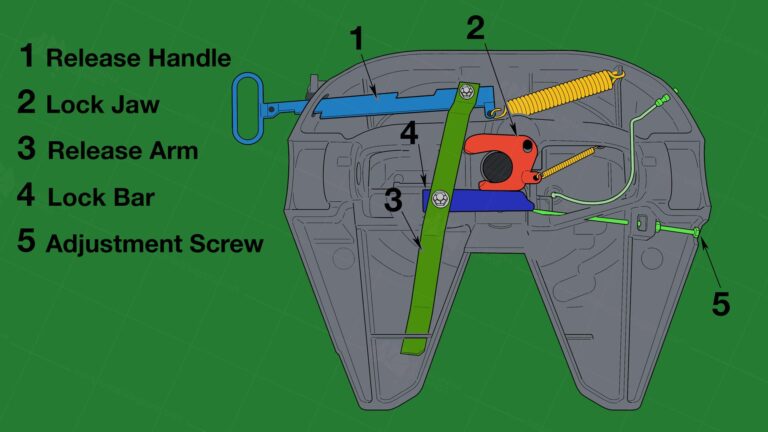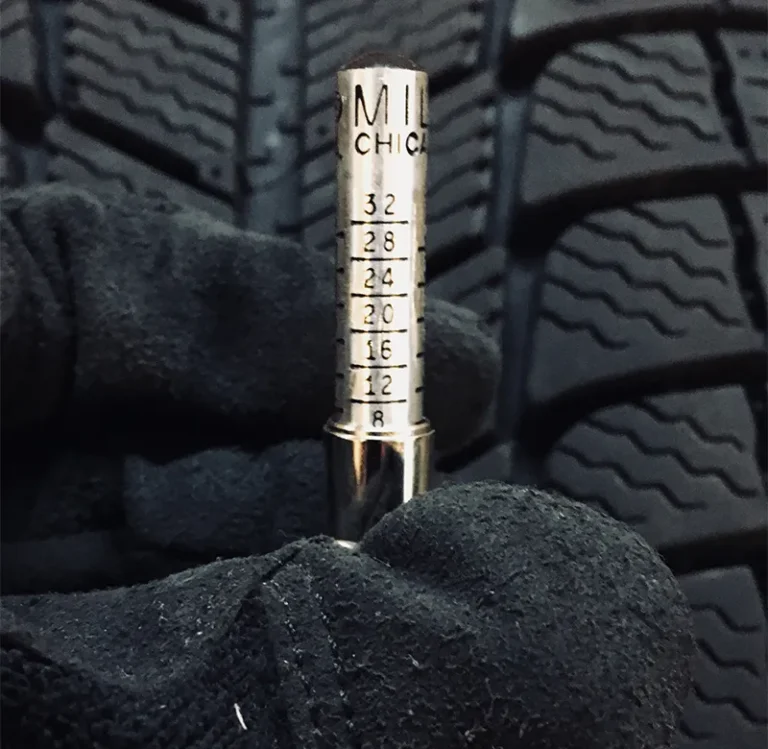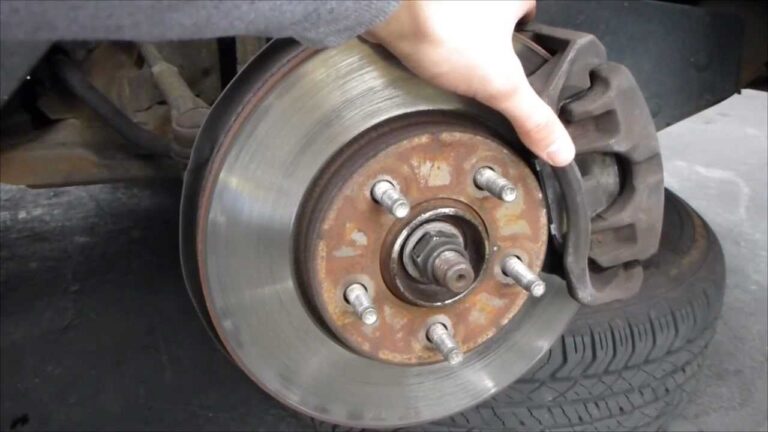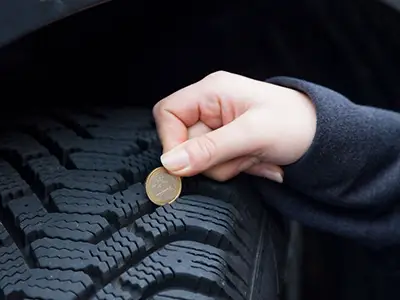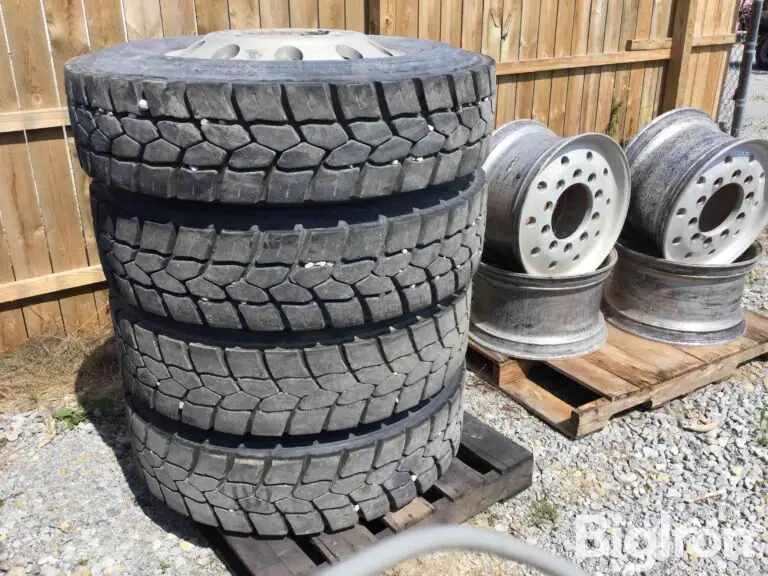To read a tire depth gauge, position the gauge level with the outer portion of the tread and check the depth. If the tread depth is too low, it’s time to replace the tire.

Credit: www.amazon.ae
Navigate As You Want: [show]
Understanding Tire Depth Gauges
Understanding Tire Depth Gauges: To use a tire tread depth gauge correctly, place the probe into the tread groove and press the base flat against the tread. The gauge will indicate the depth of the tread in 32nds of an inch. For accurate readings, measure multiple spots on each tire. It’s important to check the tread depth regularly to ensure safe driving conditions. The mechanism of a tire tread depth gauge involves inserting a probe into the tire tread and noting the depth reading. Follow the manufacturer’s guidelines for resetting the gauge and interpreting the results.
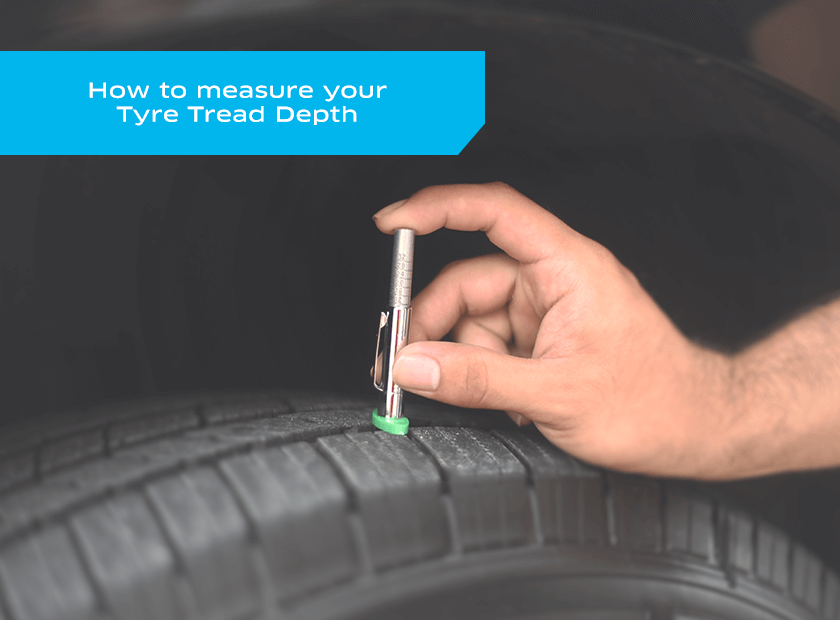
Credit: www.pclairtechnology.com
Reading A Tire Depth Gauge
To read a tire depth gauge, start by pushing the gauge to be level with the outer portion of the tread. Check the gauge to determine if the tread depth is too low. If it is, then it’s time to replace the tires. Reset the gauge after each measurement. When it comes to indications of worn tires, you can look for signs such as decreased handling and braking abilities, low traction on wet surfaces, and uneven tread wear. To determine the optimal tread depth, use a tire depth gauge to measure the depth of the tread grooves. In general, it is recommended to replace tires when the tread depth reaches 2/32 of an inch or less. Remember to check your tire tread depth regularly to ensure safe and efficient driving.
Selecting The Right Tire Depth Gauge
To select the right tire depth gauge, you need to consider a few key features. First, let’s look at the types of tire tread depth gauges available. There are various options on the market, such as digital gauges and manual gauges. Each type has its advantages and disadvantages, so you should choose the one that suits your preferences and needs.
When selecting a gauge, it’s important to consider features like accuracy and durability. Look for a gauge that provides accurate measurements and is made from high-quality materials to ensure it lasts long. Additionally, consider the ease of use and readability of the gauge. A user-friendly gauge with clear markings and a comfortable grip will make the process of measuring tire depth much simpler.
Remember to check the customer reviews and ratings before making a purchase. Reading feedback from other users can help you make an informed decision and select a reliable and accurate tire depth gauge.
When To Replace Tires Based On Depth
Knowing when to replace tires is crucial for safety and performance. Keeping an eye on tire depth is essential to determine the need for replacement. Low tread depth poses serious safety concerns, affecting traction and handling, especially in wet and snowy conditions. Regularly checking tire tread depth and following manufacturer’s guidelines for replacement is imperative for safe driving. The use of a tire depth gauge allows for accurate measurements, ensuring timely replacement and optimal tire performance.
Common Queries On Tire Tread Depth
Learn to read tire depth gauge by ensuring it aligns with outer tread, evaluating if depth is sufficient, and resetting gauge for future use effectively. Keep tires safe by checking and replacing them promptly when tread depth indicators show the need.
| Common Queries on Tire Tread Depth: – Use a digital or traditional gauge along the tread groove. – Ensure accurate measurements by checking multiple spots. – Look for wear indicators like built-in tread wear bars. |
| Alternative Methods for Measuring Tread Depth: – Utilize a coin method with the help of a quarter or a penny. – Consider using a tread depth gauge keychain for quick checks. – Explore specialized tread depth measuring tools for precision. |
| Resources for Further Information: – Online tutorials and videos on tire tread depth measurements. – Manufacturer websites for specific guidelines on tire wear. – Forums and communities for practical tips from experienced users. |

Credit: www.tirebuyer.com
Frequently Asked Questions On How To Read Tire Depth Gauge
How Do You Read Tire Depth?
You can read tire depth using a tread depth gauge. Press the gauge into the outer tread and check the level. If the depth is low, it’s time to replace the tire. Simply place the gauge in the tread groove and press down to measure.
What Is 4 32 Tread Depth?
A 4 32 tread depth refers to the measurement of tire tread. The tread depth gauge is used to measure the depth of the tire tread. It is important to regularly check the tread depth, as tires with insufficient tread depth may need to be replaced.
Is 7 32 Tire Tread Good?
A 7/32 tire tread is considered good.
At What Tread Depth Should Tires Be Replaced?
Tires should be replaced when the tread depth reaches 2/32 inches or when the tread wear indicators are visible. Regularly check for wear and replace as needed.
Conclusion
Mastering the art of reading a tire depth gauge is a valuable skill for maintaining safe driving. Regularly checking and understanding the depth of your tire treads can significantly improve your vehicle’s performance and safety. By following the proper techniques and guidelines, you can ensure that your tires are in optimal condition.
Keep practicing and stay safe on the road!
